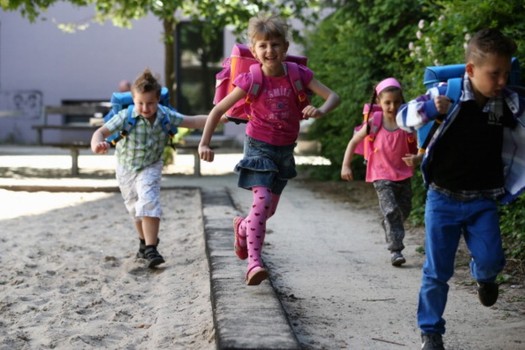A new study suggests that kids are at greatest risk for being hit by a car after school between the hours of 2 and 5 p.m. The research, presented at the Annual Meeting of the American Academy of Orthopedic Surgeons in Las Vegas, found that most accidents happened while children were unsupervised, near schools and bus stops, and in the spring months.
“Accidents most frequently occurred when no parental supervision was present from the time of school dismissal until the early evening hours and were most often located mid-block,” lead study author Alexa J. Karkenny, MD, an orthopedic resident at Jacobs Medical Center in New York City, said in a news release. “Injuries peaked during the warm months and clustered both near schools and bus stops located near schools,” she added.
According to the news release, pedestrian injuries are among the leading causes of pediatric deaths. In a 2012 report, the National Highway Traffic Safety Administration found that nearly one-fifth of children killed in traffic crashes were pedestrians. Nearly 73 percent of pedestrian fatalities occur in urban settings.
For the study, researchers reviewed the electronic records of 100 child pedestrian emergency department visits at St. Christopher’s Children Hospital in Philadelphia. Patients included 79 boys and 21 girls, with an average age of 8 years. The most common injuries were thigh, shin and ankle fractures.
Findings showed that most of the accidents occurred around the time of school dismissal and in the early evening hours, with 29 percent between 2 and 5 p.m. and 42 percent between 5 and 9 p.m. Of the 44 cases with enough accident-scene information for analysis, 31 children were injured mid-block, eight were at a crosswalk and nine were struck on private property, a sidewalk or in a parking lot.
Karkenny and her colleagues recommended that efforts to reduce children’s risk of being hit by a car should focus on improving supervision when kids leave school at the end of the day and on boosting road safety in school zones.
Robert Glatter, MD, an emergency physician at Lenox Hill Hospital in New York City, agreed.
After-school hours are “times when adult supervision may not be ideal,” Glatter, who was not involved in the study, told HealthDay. “Having increased police awareness and school-sponsored safety patrols available when afternoon caregivers cannot be present may help reduce the risk.”
Because distracted kids are less safe on the street, Glatter urged parents to make their children aware of the need to be alert when they are walking to and from school. He also suggested banning smartphone use while walking on streets and crosswalks to cut down on distractions that can impact pedestrian safety.















